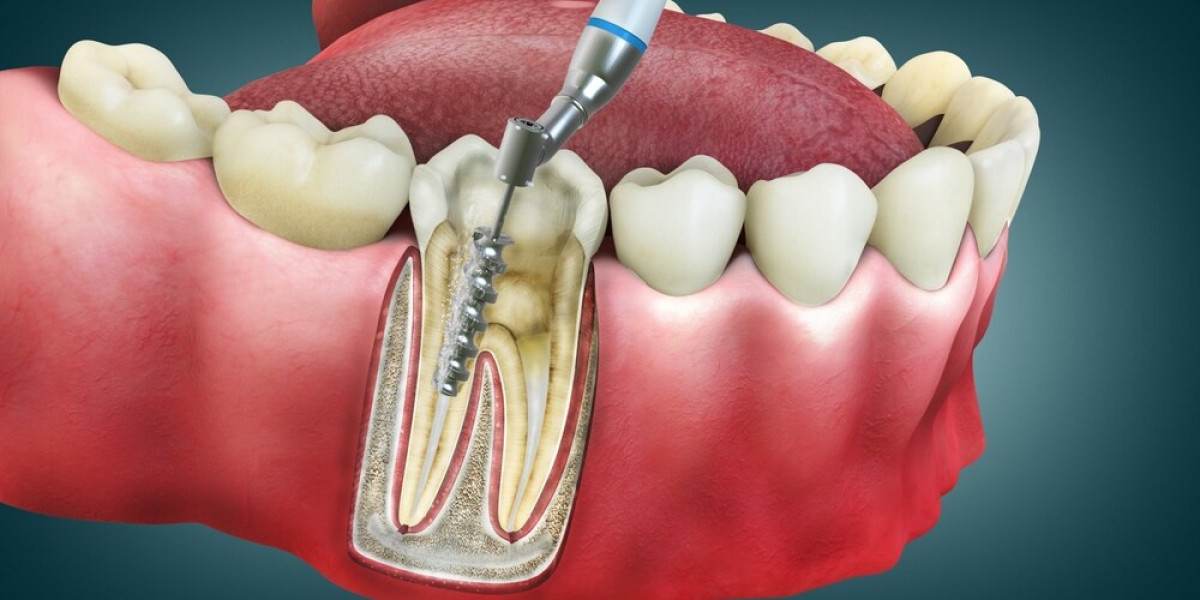Ever had your dentist tell you that you need either a root canal or an extraction? It can sound a little scary, right? But don't worry! In this blog, we’re going to explore what root canal vs extraction means and help you understand which one might be the best option.
What Are Teeth Made Of?
Before we dive into root canals and extractions, let’s first talk about what your teeth are made of. Knowing this will help you understand why dentists sometimes need to do these procedures.
Your teeth have three main parts:
- Enamel: This is the hard, outer layer that protects the tooth.
- Dentin: Under the enamel is the dentin, which supports the tooth and makes up most of its structure.
- Pulp: Deep inside your tooth is a soft part, the pulp. It contains blood vessels and nerves. The pulp is what can get an infection if you don’t take good care of your teeth.
Now that you know what’s inside your teeth, let’s see why sometimes a tooth can get into trouble.
Why Teeth Need Special Treatment
Your teeth are really strong, but they can still get damaged. Sometimes, cavities (tiny holes caused by plaque and bacteria) form in your enamel. If a cavity is small, the dentist can usually fix it with a filling. But if you ignore the cavity for too long, it can reach the pulp of your tooth and cause an infection.
When this happens, your tooth might need more than just a simple filling. This is when a dentist might suggest either a root canal or an extraction.
What Is a Root Canal?
A root canal vs extraction is a dental procedure that helps save your tooth when the pulp (the soft part inside the tooth) becomes infected or damaged. Instead of removing the whole tooth, the dentist removes the infected pulp, cleans the inside of the tooth, and then fills and seals it.
Here’s how the root canal process works:
- Numbing the Tooth: First, the dentist will make sure your tooth and the area around it are completely numb so you don’t feel any pain.
- Removing the Infected Pulp: The dentist will carefully remove the infected pulp using special tools.
- Cleaning the Tooth: Once the pulp is not there, the dentist cleans your tooth to make sure no bacteria or infection is there.
- Filling and Sealing: After the tooth is clean, it gets a material to keep it strong, and then they seal the tooth to prevent future infections.
Once the root canal is complete, the tooth is often gets a crown, which is like a little cap that protects the tooth and makes it look and feel just like a normal tooth.
What Is an Extraction?
An extraction is when the dentist completely removes your tooth from your mouth. Sometimes, the tooth is not in a good condition and it is so bad that it can’t get better.
Here’s what happens during an extraction:
- Numbing the Tooth: Just like with a root canal, the dentist will make sure the area around the tooth is numb so you don’t feel any pain.
- Loosening the Tooth: The dentist uses tools to gently loosen the tooth from its socket in your gums.
- Removing the Tooth: Once the tooth is loose enough, the dentist pulls it out. You might feel some pressure, but it shouldn’t hurt.
After an extraction, you might need some time to recover. The dentist will give you instructions to follow, like what foods to eat and how to take care of the area where the tooth was removed.
Why Would You Need a Root Canal or Extraction?
Now you know what root canal vs extraction are, but how do you know which one you might need? Let’s look at some reasons why a dentist might suggest either a root canal or an extraction:
Reasons for a Root Canal:
- Deep Cavities: If a cavity has reached the pulp of your tooth, a root canal can save the tooth by removing the infected pulp.
- Cracked or Chipped Tooth: If your tooth is very bad, bacteria can get inside and cause an infection in the pulp.
- Infection: Sometimes, even without a cavity, bacteria can infect the pulp of your tooth. A root canal can help clear the infection without removing the whole tooth.
Reasons for an Extraction:
- Severe Damage: If the tooth is too unhealthy, you might need to get rid of it.
- Advanced Infection: If the infection is really bad and can’t be better with a root canal, the tooth may need to be better to prevent the infection from spreading.
- Overcrowding: Sometimes, dentists pull a tooth to make more room in your mouth, especially if you're getting braces.
Which Option Is Best?
The big question is, which option is best: root canal therapy or extraction? It depends on your specific situation. Let’s compare the two:
Advantages of a Root Canal:
- Saves Your Tooth: With a root canal, you get to keep your natural tooth. This is great because it’s always better to keep your original teeth if possible.
- Restores Function: After a root canal and crown, your tooth will look and work just like a normal tooth.
- Less Recovery Time: Root canals usually have a quicker recovery time compared to extractions.
Disadvantages of a Root Canal:
- Cost: Root canals can be more expensive than extractions.
- Multiple Appointments: You may need to visit the dentist a few times to complete the root canal and get a crown.
- Potential for Future Problems: If the infection comes back or the tooth weakens, further treatment may be needed.
Advantages of an Extraction:
- Permanent Solution: Once the root canal procedure tooth is no longer there, the infection or damage is no more either.
- Sometimes Simpler: In some cases, extraction can be quicker and simpler, especially if the tooth is too unhealthy to save.
- Prevents Spread of Infection: If the infection is severe, removing the tooth can stop it from spreading to other parts of your mouth or body.
Disadvantages of an Extraction:
- Missing Tooth: You lose your tooth, and without it, chewing might be harder, and your smile might change.
- Bone Loss: After a tooth is gone, the bone in that area will shrink. This will affect how your jaw and other teeth function.
- Replacement Needed: You may need a replacement tooth, like an implant or a bridge, which can be costly and take time.
Conclusion: Root Canal or Extraction?
Both Root Canal Treatment and extractions have their pros and cons, and the best choice depends on your situation. If your tooth can be saved and is in good condition, a root canal might be the best way to keep your natural tooth. If the tooth is very unhealthy, an extraction is the best way to stop pain and prevent future problems.





